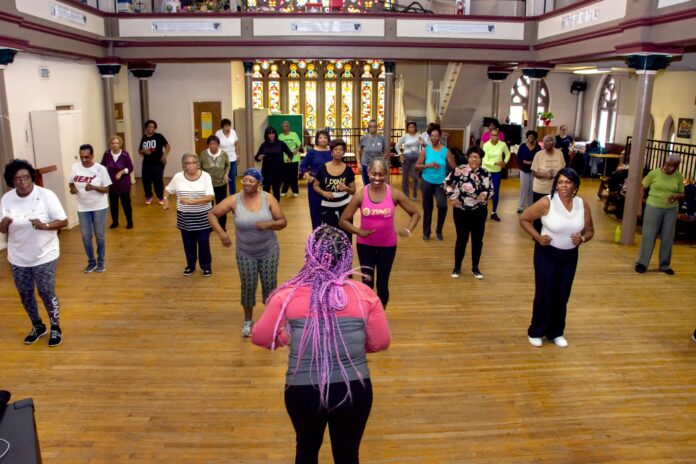Sedentary, older adults who took aerobic dance classes twice a week showed improvements in brain areas critical for memory and thinking.
Exercise can change how crucial portions of our brain communicate as we age, improving aspects of thinking and remembering, according to a fascinating new study of aging brains and aerobic workouts. The study, which involved older African-Americans, finds that unconnected portions of the brain’s memory center start interacting in complex and healthier new ways after regular exercise, sharpening memory function.
The idea that physical activity improves brain health is well established by now.
But those students were young and healthy, facing scant imminent threat of memory loss. Little was known yet about whether and how exercise might alter the communications systems of creakier, older brains and what effects, if any, the rewiring would have on thinking.
So, for the new study, which was published in January in Neurobiology of Learning and Memory, Mark Gluck, a professor of neuroscience at Rutgers University in Newark, N.J., and his colleagues decided to see what happened inside the brains and minds of much older people if they began to work out.
Some then started working out, while others opted to be a sedentary control group. All shared similar fitness and memory function at the start. The exercise group attended hourlong aerobic dance classes twice a week at a church or community center for 20 weeks.
Then the scientists started comparing and quickly noticed subtle differences in how the exercisers’ brains operated. Their scans showed more-synchronized activity throughout their medial temporal lobes than among the sedentary group, and this activity was more dynamic. Portions of the exercisers’ lobes would light up together and then, within seconds, realign and light up with other sections of the lobe. Such promiscuous synchronizing indicates a kind of youthful flexibility in the brain.
Just as important, those changes played out in people’s thinking and memories. The exercisers performed better than before on a test of their ability to learn and retain information and apply it logically in new situations.
This study involved older African-Americans, though, a group that is underrepresented in health research but may not be representative of all aging people. Still, even with that caveat, “it seems that neural flexibility” gained by exercising a few times a week “leads directly to memory flexibility,” Dr. Gluck says.
Source:
Reynolds, G. (2021, March 3). How exercise enhances aging brains. The New York Times. https://www.nytimes.com/2021/03/03/well/move/exercise-aging-brains.html.
Comment:
One thought I’ve had during initial research is that not only are we trying to improve mobility, but also possibly consider preventative measures to losing mobility. Most people know exercise is good for you but still a lot of people don’t do it. This study was especially interesting because it didn’t look at exercise necessarily as a preventative measure, but showed that even if you start or continue exercising at an older age, that it can improve different cognitive abilities— and other articles show the positive impact exercise has on physical abilities and illnesses as well. So even if you have not previously worked out, if you are able, exercise can do things like help keep your memory sharp and cognitive skills in tact, which can play a role into mobility as well. Other sources also mention exercise programs as a great way to increase social connectedness.




